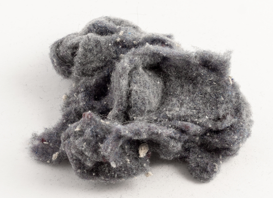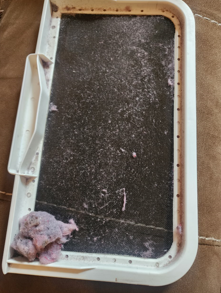Whenever you choose to go camping, you might be forced to try and start a campfire in the rain. It can be difficult to complete this task when you are more than likely soaking wet and cold, but fear not. Just follow these steps and you will be dry and warm in no time.
- Prepare your wood/fuel
If it is raining, chances are that there is a lot of moisture in the air which means that your firewood might not light up as easily as it normally would. To get around this issue, try splitting some of your larger pieces of wood into smaller chunks so that more surface area is exposed to the incoming flames of your campfire. This should help get things going faster even if they aren't totally dry yet.
Try to use the best wood you can find. This will be the wood that has less moisture on or in them. Your wood can burn even when there is moisture present, however, there will usually be some amount of smoke that is unignited and this will probably cause some issues with the air quality of your campsite. If you have ever been camping before, then you probably know what we are talking about.
![lint for campfire]()
One of the best things you can use to help you get your fire going is lint. I get lots of lint from my clothes drier filter as seen below.
![clothes drier filterv with lint]()
Lint is amazing at starting a fire. And hey, it's free.
If you don't want to go through the hassle of gathering kindling and splitting up logs for your campfire, you can try using an alternative such as wax paper.
Another tip is to place two stones on either end of your firewood and set them ablaze. The main advantage here is that it will help provide a base for your firewood.
- Find shelter for your campfire
When trying to build a fire on a rainy day, the first thing you have to do is find shelter both for you and the fire. A fire that is open to the rain will not last long. Try to build a covering over your campfire. More preferably a covering that will not ignite as quickly as paper or clothing. A shelter will keep your fire ablaze for long enough to keep you warm or provide you with a way to make a meal.
The covering you choose to prepare for your fire should have openings at the side to let air in. We all have to remember that fire needs oxygen to stay alive. The warmth provided by your fire will be lost if enough oxygen can not reach the wood.
- Build a platform for your campfire
Your next step is to build a foundation for your campfire. This ensures that you begin with an even layer of material at the bottom of the fire pit. Dried twigs are also another nice way to start off a fire because they are small and flat, making it easier to lay them out evenly. If you have leftover paper or old logs from other fires, now would be a great time to use them up . You can also put these under the first layer of tinder on top of your platform if they prove large enough to catch on fire.
- Have lots of extra wood/kindling on hand
Wet wood may not burn very well or for very long by itself, but combine it with dry kindling and you have a recipe for success. So bring along some extra pieces of kindling to help get your campfire started in inclement weather - this will also ensure that you stay warm once your fire is going since they produce heat and light.
- Start small
It goes without saying, but don't try to start a huge fire in order to keep warm when it's raining outside. That is asking for trouble. Try starting with smaller pieces of wood and then gradually work into larger ones if you still need more heat or light. This way, when things get out of control, you will only have yourself to blame rather than bad luck.
- Be prepared for ignition
Wet wood is very difficult to get lit, so expect to either use some kindling, paper, or a dry fire starter in order to get your wet wood burning . It will take longer than usual, but if you add enough kindling and firestarter (plus the dry logs), you should be able to get your campfire going.
You should always be ready for ignition and try to not get caught off guard. You can always bring some extra dry firestarters or lighter fluid if you think your logs might be a bit damp, and this will make it much easier for you to get your campfire going.
- Build it right
The last thing that you want to do is build your campfire under a tree, especially if there are large branches above your firepit. It may be tempting to use the overhead branches as protection from the rain, but they will also drip water on top of you while you are trying to stay warm! If possible, find another location completely sheltered from the elements before gathering up fallen wood and lighting your fire.
- Only use what is necessary
When trying to stay warm on a rainy day, there are some people who try having too big of a campfire. If you are someone who is looking to settle in for the night by the fire, this is a good idea. However, if you are simply looking to stay warm for a short time or cook something quickly over the fire before going indoors, only use as much wood as you need. This will help keep your fire from getting out of control and becoming a full blown blaze.
- Beware of things that can flare up
Another big danger when trying to start a campfire during wet conditions is the chance of something unexpected flaring up because it got too close to your flames or coals. In other words, be aware of how far everything is from where your fire will be burning and make sure it cannot catch on anything else nearby should sparks fly their way. This includes dried leaves and grasses surrounding your campsite, too.
Eventhough it is raining, there might be grass or leaves dry enough close by to catch on fire.
- Bring dry wood with you to start with
Having dry wood on hand is a great way to start a campfire in the rain. This will eliminate the need for you to be going out into the rain to collect it yourself. Should you not have any dry wood available, try finding wood that possibly got wet but is still clinging to the tree, these type of wood will usually have most of the water already running off.
Subscribe
Stay updated with our newsletter
Items needed for a campfire
There are certain items you will need for your campfire in order for you to get it up and running quickly. Here are some of them:
| Item |
Description |
| Firewood |
The most important item for a campfire. It is recommended to bring dry firewood that is cut into manageable sizes. You can also collect firewood in the woods, but it is important to check local regulations before doing so. |
| Kindling |
Small sticks or twigs used to start the fire. It is recommended to bring your own kindling as it may be difficult to find dry kindling in the woods. |
| Matches or Lighter |
Necessary to light the fire. Make sure to bring a waterproof container to keep the matches or lighter dry. |
| Firestarter |
Can be used to help start the fire. There are many types of firestarters available, including wax-dipped sticks, compressed sawdust, and chemical fire starters. |
| Fire Pit or Ring |
Necessary to contain the fire and prevent it from spreading. Some campsites may have designated fire pits or rings, while others may require you to bring your own. |
| Shovel |
Necessary to help control the fire and to put it out when you are finished. |
| Water or Sand |
Used to extinguish the fire. Make sure to have a bucket of water or sand nearby before starting the fire. |
| Gloves |
Can protect your hands from the heat of the fire and from sharp objects in the firewood. |
Here are some other handy products:
Tips for staying warm
| 1. Choose a good campsite location that is sheltered from wind and near natural windbreaks like trees, boulders, or hills. |
| 2. Invest in a good quality sleeping bag and use a sleeping pad to insulate yourself from the cold ground. |
| 3. Wear layers of clothing made of wool or synthetic materials that wick away moisture and trap body heat. |
| 4. Bring a hat, gloves, and warm socks to keep extremities warm. |
| 5. Use a hot water bottle or hand warmers in your sleeping bag to add extra warmth. |
| 6. Stay active during the day to generate body heat, but don't overdo it and get sweaty. |
| 7. Eat high-energy, warm foods like soups and stews, and drink warm beverages like tea or hot chocolate. |
| 8. Use a tent heater or a safe and approved heat source, but follow safety instructions and don't leave it unattended. |
| 9. Create an insulating barrier between your body and the cold ground by laying down a layer of pine needles, leaves, or even a tarp under your sleeping pad. |
| 10. Use a good quality, wind-resistant tent and set it up properly to prevent drafts and keep warmth inside. |
Conclusion
Once you have done all of these things, you should now be able to enjoy a nice campfire with little worry about something going wrong.
If you follow these tips on how to build a fire in the rain , then you can keep warm even during waterlogged conditions. Remember that having someone with experience building fires help around is always recommended when trying to figure out how to start one in inclement weather like this.


